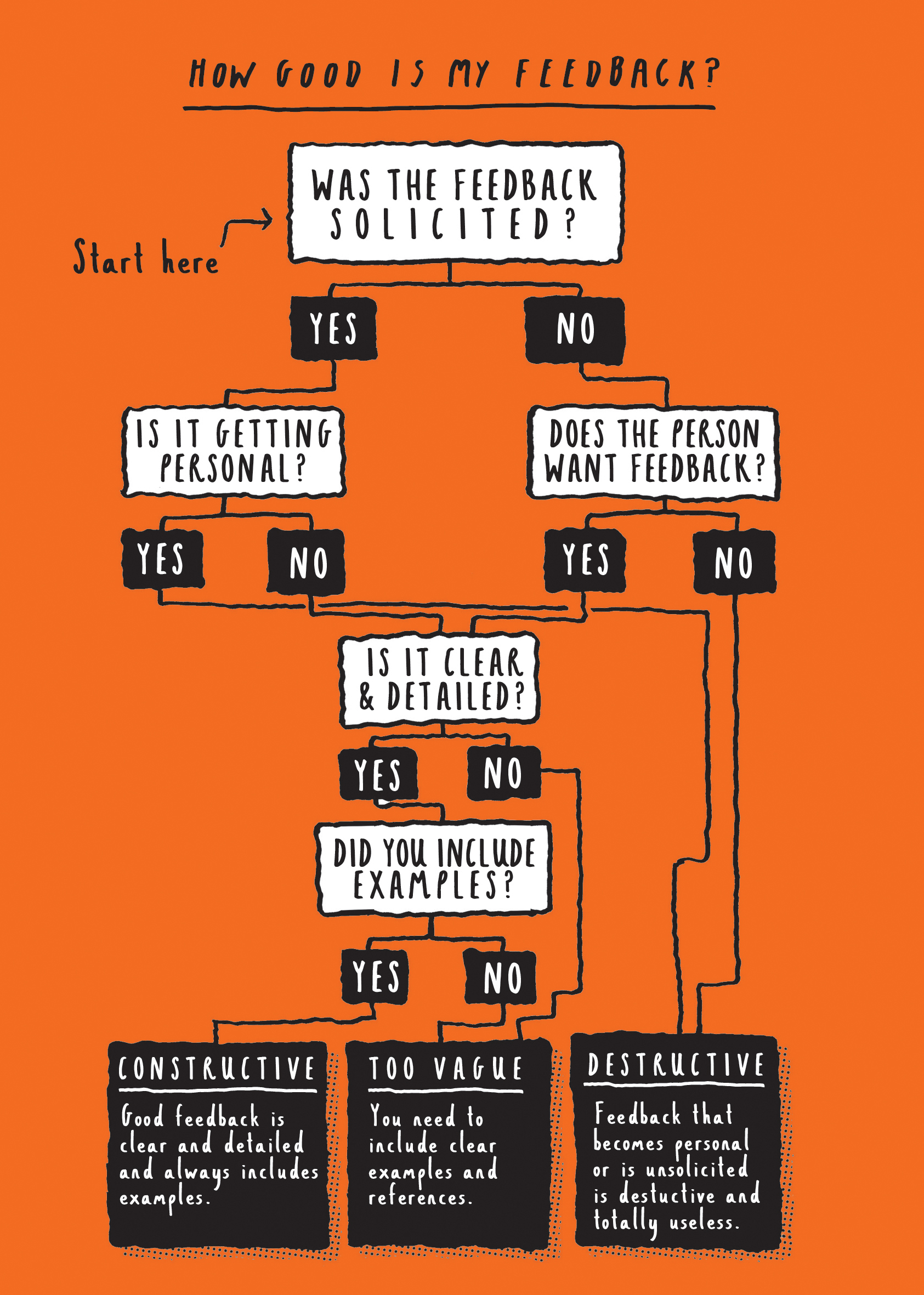How to give feedback without being an asshole
Fed up with your feedback falling on deaf ears? Ask yourself: might you be part of the problem?

This is an extract from How to do Great Work Without Being an Asshole, by Paul Woods.
The creative industries are rife with colourful stories of famous individuals who, during the course of a project, come in and decide to tear down weeks of work and start again in the quest for "greatness". This is, of course, part of any good process that wishes to produce quality work. However, in my experience, creative leadership often has difficulty with giving useful feedback to their teams.
Clear, unambiguous feedback is critical to producing great work. This doesn’t mean being a dick, but it does mean being honest, clear, and direct. Creative directors often forget that what is crystal clear to them may not be for the junior designer with vastly less experience. This results in both a frustrated designer and a creative director who simply cannot understand why the other one doesn’t "get it".

In my first years as a design director, I would meet the design team to give my two cents on their design solutions. I would give feedback like, "Needs to be bolder!" or "Let’s make it more epic", which, in hindsight, is baffling: It was unclear, unspecific, and completely useless. A good leader caters to the lowest common denominator – the least knowledgeable junior – when it comes to giving a briefing or feedback. If that person doesn’t understand, your feedback is useless. When the next round of work comes back looking like shit, it is your fault, not theirs.
With that in mind, here are the dos and don't of giving and receiving feedback...
The dos and don'ts of giving feedback
Here’s how you can deliver even the most scathing feedback without being an asshole (and have your team learn something along the way).
Be direct and honest
Daily design news, reviews, how-tos and more, as picked by the editors.
Don’t sugarcoat feedback. Be direct and honest at all times. A creative director who sugarcoats feedback will almost certainly produce mediocre work. Be polite and respectful, but straight to the point and uncompromising. Never feel guilty or afraid to make people start again.
Be positive and constructive
The egomaniac never wants to cede their power or control to others, which is why they make such bad leaders. A good creative leader’s job is not only to produce great work, but to build teams that can produce great work by themselves. When you give feedback, ask yourself whether your team will learn from this experience. Building a great team means building the skills and confidence of individuals with constructive feedback. Creatives work best when they feel safe to make mistakes and experiment without fearing the wrath of an overpowering leader.

Be clear and unambiguous
This is where creative leaders, even those with the very best of intentions, often fall short. Your feedback should be clear and, above all, actionable. Good feedback is concrete and leaves no room for ambiguity. Instead of a vague statement like "The homepage needs to be more epic", be clear: "The lack of images and white background on the homepage makes the design too boring and plain. Let’s try a looping background video in the top hero area. Also, let’s try a version where you invert the background colours on the page so it has more impact."
Provide examples
Verbal or written feedback, no matter how explicit, is not always enough. Always provide an example of the point you wish to make. In our previous 'boring homepage' example, here you could show a great example of a background video to illustrate the exact look you desire.
Encourage questions
It’s all too common that creatives – especially juniors – are afraid to ask questions in case they sound stupid. The creative leader who makes their team feel stupid about asking questions is the real idiot in the room. Ensure your team feels secure by including a dedicated segment for questions in every feedback session and not closing it until every creative in the room has asked at least one question.
The dos and don'ts of taking feedback
Just as a creative or design director has a responsibility to deliver clear and constructive feedback, creatives also need to interpret it correctly in order to produce great work. For the creatives reading this, here’s how to keep your side of the bargain.
Read the brief
This may seem like the most obvious thing in the world, but it never fails to surprise me. You’re not in university anymore – thoroughly understanding the assignment is not an optional activity. Read the fucking brief, please.
Now read the brief again
Yes, you heard me right. You probably missed something, most likely in the Deliverables section. Please read it again.
Ask questions
For some reason, many creatives seem to think that asking questions makes them look stupid. They keep silent in briefing sessions and only ask their peers what something meant much later on. Remember this: There are no stupid questions, only stupid people who don’t ask any questions. If you don’t know something, then ask.
Take notes
This is my pet hate, and is extremely common among junior creatives and interns. You are not a superhero with a photographic memory: Take fucking notes. On paper, with a pen.
This is an edited extract from How to do Great Work without Being an Asshole by Paul Woods, published by Laurence King on 11 March 2019. How to do Great Work without Being a Asshole is a straight-talking, business self-help book promoting kinder and more sustainable working practices in the creative industries. RRP £12.99.
Read more:

